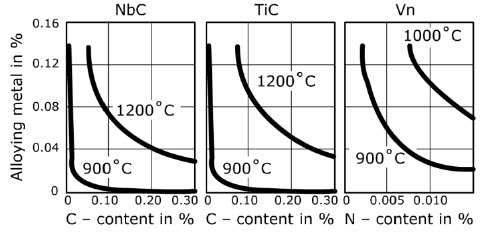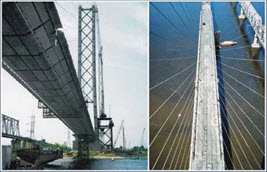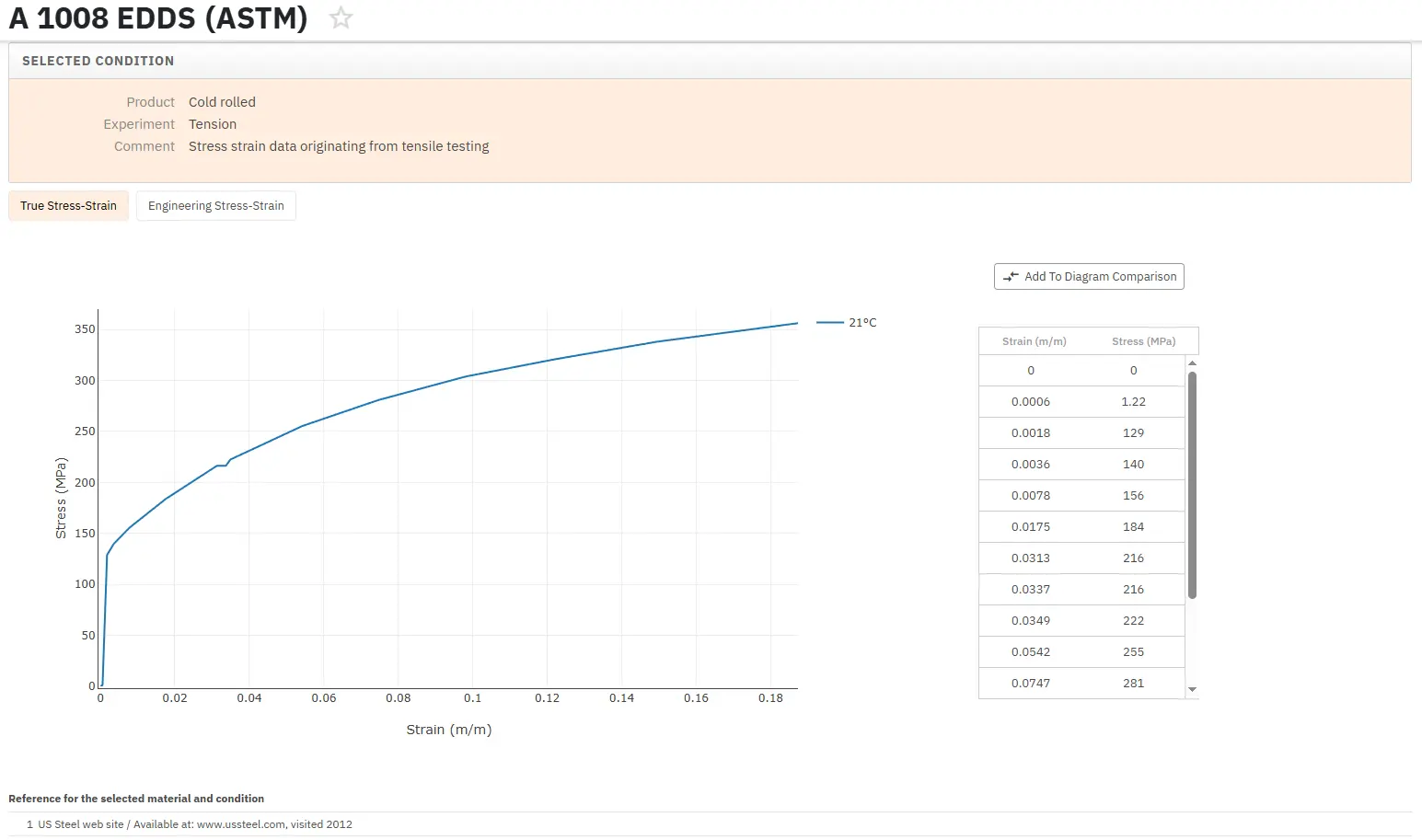Application of Microalloyed HSLA Steel: Part One
Abstract
Microalloyed (MA) or High Strength Low Alloy (HSLA) steels represent a critical category of advanced materials, accounting for approximately 12% of global steel production. These specialized steels typically contain 0.07 to 0.12% carbon, up to 2% manganese, and strategic additions of niobium, vanadium, and titanium (generally maximum 0.1%) in various combinations. HSLA steels have revolutionized major industries including oil and gas extraction, construction, and transportation through their superior mechanical properties, enhanced toughness, and excellent weldability. Originally developed in the 1960s for large-diameter pipelines, these materials utilize thermomechanical rolling processes to achieve optimal grain refinement and mechanical performance. This comprehensive overview examines the composition, processing requirements, and diverse applications of HSLA steels in modern industrial applications.
Introduction to HSLA Steel Technology
Microalloyed (MA) or High Strength Low Alloy (HSLA) steels constitute a vital category of advanced materials that have transformed modern industrial applications. These specialized steels represent approximately 12% of total world steel production and serve as fundamental materials across every major steel market sector globally. The development of HSLA steel technology has been instrumental in the expansion of critical industries, particularly oil and gas extraction, construction, and transportation sectors.
The strategic importance of HSLA steels lies in their ability to deliver superior mechanical properties while maintaining excellent weldability and formability characteristics. Unlike conventional carbon steels, these materials are engineered to meet specific performance requirements rather than predetermined chemical compositions, making them highly adaptable to diverse industrial applications.
Steel Classification and Definitions
Understanding the distinctions between various steel categories is essential for proper material selection and application. The following classifications provide clarity on the hierarchical structure of steel alloy systems:
Table 1. Steel Classification Definitions
| Steel Type | Definition |
| Alloy Steel | Steel containing significant quantities of alloying elements (other than carbon and the commonly accepted amounts of manganese, silicon etc.) to effect changes in the mechanical or physical properties. |
| Low Alloy Steel | Steel containing less than 3.5% of alloying elements e.g. 2.25% Cr 1% Mo. |
| Micro Alloy Steel | Steel containing small amounts of vanadium, niobium and/or titanium. Individual elements generally less than 0.10% and total microalloying elemants generally less than 0.15%. Also known as HSLA steels. |
High-strength low-alloy (HSLA) steels, also referred to as microalloyed steels, are specifically designed to provide superior mechanical properties and enhanced resistance to atmospheric corrosion compared to conventional carbon steels. These materials are not classified as traditional alloy steels because their development focuses on achieving specific mechanical performance criteria rather than predetermined chemical compositions.
Chemical Composition and Processing Requirements
Standard HSLA Steel Composition
HSLA steel typically incorporates a carefully balanced chemical composition to optimize performance characteristics. The standard composition includes 0.07 to 0.12% carbon content, up to 2% manganese, and strategic small additions of niobium, vanadium, and titanium (usually maximum 0.1%) in various combinations. This precise compositional control enables the achievement of desired mechanical properties through controlled microstructural development.
The material is preferably produced through thermomechanical rolling processes, which maximize grain refinement as the foundation for improved mechanical properties. This processing approach ensures optimal microstructural control and consistent performance characteristics across different product forms.
Role of Molybdenum in HSLA Development
Molybdenum has played a crucial role in the initial development and optimization of HSLA steels. The strategic addition of 0.1-0.2% molybdenum produces a fine grain structure of acicular ferrite and substantially enhances the precipitation hardening effects achieved with other alloying elements. This synergistic effect has been instrumental in advancing HSLA steel technology.
Historical data indicates that approximately 2 million tons of molybdenum-containing HSLA steels for pipeline applications were produced worldwide during the 1970s, demonstrating the significant industrial impact of this technological advancement.
Table 2. Common Composition Range of HSLA Steels (wt.%)
| C (%) | Mn (%) | Nb (%) | V (%) | Mo (%) |
| 0.06-0.12 | 1.4-1.8 | 0.02-0.05 | 0-0.06 | 0.2-0.35 |
Critical Processing Temperature Requirements
To realize the full strengthening potential of microalloying additions, specific temperature control during processing is essential. The soaking temperature prior to forging must be sufficiently high to dissolve all vanadium-bearing precipitates. A soaking temperature above 1100°C (2010°F) is preferred for optimal results.
For niobium-titanium microalloyed steel systems, single-step austenite reheating at 1150°C provides superior austenite conditioning compared to higher reheating temperatures at 1240°C. This temperature optimization ensures proper microstructural development and mechanical property achievement.
Complete dissolution of carbonitride precipitates occurs at 1140°C within the temperature interval between 1100-1200°C. This precise temperature control is critical for achieving the desired precipitation hardening effects during subsequent cooling and processing stages.

Figure 1: Precipitate Solid Behavuiour
The dissolution behavior of various precipitates, including NbC, TiC, and VN compounds, varies significantly with carbon content, as illustrated in the solubility diagrams. These relationships provide essential guidance for optimizing processing parameters and achieving desired mechanical properties.
Industrial Applications of HSLA Steel
Primary Application Sectors
HSLA steels have found extensive application across numerous industrial sectors due to their exceptional combination of strength, toughness, and weldability. The versatility of these materials has enabled their adoption in demanding applications where conventional carbon steels would be inadequate.
Key application areas include:
- Infrastructure and Construction: Bridges, building structures, and architectural components benefit from the high strength-to-weight ratio and excellent weldability of HSLA steels. These materials enable the construction of longer spans and more efficient structural designs while maintaining safety and durability requirements.
- Transportation Industry: Vehicle components, suspension systems, and transportation infrastructure utilize HSLA steels to achieve weight reduction while maintaining structural integrity. The automotive industry particularly benefits from the formability and crash performance characteristics of these materials.
- Energy Sector: Tubular components, offshore platforms, and pipeline systems represent major applications where HSLA steels provide superior performance under demanding environmental conditions. The oil and gas industry was instrumental in driving the initial development of these materials.
- Heavy Equipment: Industrial machinery, construction equipment, and agricultural implements utilize HSLA steels to achieve improved durability and performance while reducing overall weight and material consumption.
- Railway Applications: Rail systems benefit from the wear resistance and fatigue performance of HSLA steels, particularly in high-traffic and heavy-haul applications.
Case Study: Russian Bridge Construction Projects
Russia provides an excellent example of large-scale HSLA steel implementation in critical infrastructure projects. The development and application of advanced construction steels have enabled the completion of impressive engineering projects across the country.
More than 450,000 tonnes of high-strength, high-toughness HSLA steel have been utilized for bridge construction projects throughout Russia. These applications demonstrate the material's capability to meet demanding structural requirements while providing long-term durability and performance.
Notable bridge construction projects include structures spanning major rivers such as the Ob in Surgut city, the Kama in Perm, the Don in Rostov-on-Don, the Volga in Saratov and Volgograd, the Voronesh in Voronesh, the Oka in Kashira, and the Moscow Canal in Dmitrov. These projects showcase the versatility and reliability of HSLA steels in critical infrastructure applications.

Figure 2: Ob River Bridge in Surgut
Road bridge construction has also benefited significantly from HSLA steel technology, including major projects such as the Third Inner Ring in Moscow. These applications demonstrate the material's suitability for urban infrastructure where high traffic loads and environmental durability are essential requirements.

Figure 3: Moscow Ring Road Bridge Structures
Pipeline Applications and Development History
The development of HSLA steels began in the 1960s, primarily driven by requirements for large-diameter oil and gas pipelines. The industry needed materials that could provide high strength compared to mild carbon steel while maintaining improved toughness and excellent weldability characteristics.

Figure 4: Large Diameter Pipeline Construction
These pipeline applications established the foundation for HSLA steel technology and demonstrated the potential for these materials in other demanding applications. The success in pipeline construction led to broader adoption across multiple industrial sectors.
Technical Advantages and Performance Benefits
Mechanical Property Enhancement
HSLA steels offer significant advantages over conventional carbon steels through their optimized microstructural characteristics. The controlled addition of microalloying elements enables precipitation hardening mechanisms that substantially improve strength while maintaining ductility and toughness.
The thermomechanical processing approach utilized in HSLA steel production maximizes grain refinement, which serves as the primary mechanism for achieving superior mechanical properties. This processing control enables consistent performance across different product forms and applications.
Weldability and Fabrication Characteristics
One of the key advantages of HSLA steels is their excellent weldability, which enables efficient fabrication and assembly processes. The controlled chemical composition and microstructural characteristics ensure that welded joints maintain strength and toughness properties comparable to the base material.
This weldability advantage has been particularly important in pipeline construction, where extensive welding is required for assembly and installation. The ability to maintain consistent properties across welded joints has enabled the construction of long-distance pipeline systems with reliable performance characteristics.
Atmospheric Corrosion Resistance
HSLA steels provide enhanced resistance to atmospheric corrosion compared to conventional carbon steels. This improved corrosion resistance reduces maintenance requirements and extends service life in outdoor applications, providing significant economic benefits over the material lifecycle.
Future Developments and Trends
The continued development of HSLA steel technology focuses on optimizing performance characteristics for emerging applications and environmental requirements. Advanced processing techniques and compositional modifications are enabling new capabilities and expanded application opportunities.
Research efforts continue to focus on improving the balance between strength, toughness, and formability while maintaining excellent weldability characteristics. These developments are expected to enable further expansion of HSLA steel applications across diverse industrial sectors.
Conclusion
Microalloyed HSLA steels represent a critical advancement in materials technology that has enabled significant progress across multiple industrial sectors. The strategic combination of optimized chemical composition, controlled processing, and superior mechanical properties has established these materials as essential components in modern engineering applications.
The success of HSLA steels in applications ranging from large-scale infrastructure projects to precision automotive components demonstrates their versatility and reliability. As technology continues to advance, HSLA steels are expected to play an increasingly important role in meeting the demanding performance requirements of emerging applications while contributing to improved efficiency and sustainability in industrial operations.
Access Precise Properties of Structural Steels Now!
Total Materia Horizon contains property information for 150,000+ structural steels: composition, mechanical and physical properties, nonlinear properties and much more.

Get a FREE test account at Total Materia Horizon and join a community of over 500,000 users from more than 120 countries.